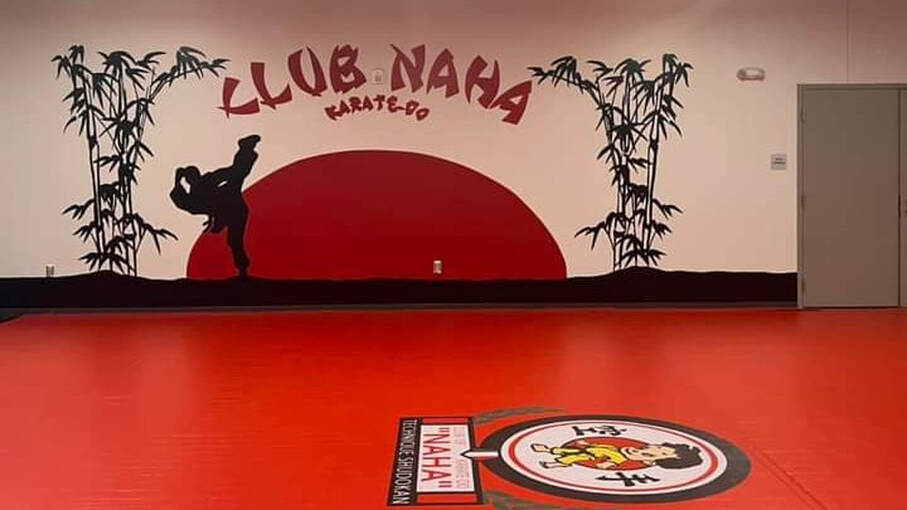CLUB NAHA KARATE-DO
At Club Naha Karate-Do, we don't just teach Shudokan Karate; we ignite a transformative journey of self-discovery, empowerment, and physical mastery. Our martial art style, Shudokan, is a symphony of power, precision, and grace, offering a path to a stronger, more confident you.
Shudokan Karate encompasses three essential pillars that guide our training:
1. Kihon - The Foundation of Power and Stability:
Our martial artists begin with the fundamentals, focusing on kihon, the building blocks of Shudokan. Kihon forms the bedrock, grounding you with deep, unwavering stances. These stances offer both stability and the foundation for potent, awe-inspiring movements. By embracing these deep stances, you strengthen your legs, enhance your balance, and cultivate a reservoir of power that lies within you.
2. Kata - The Art of Fluid Precision:
As you progress through your Shudokan journey, kata becomes your canvas for artistic expression. Kata is not merely a set of choreographed moves; it's an embodiment of grace and control. Shudokan kata develops your speed, agility, and precision. At the higher levels, brown and black belt practitioners unlock a more fluid style that includes elements of grappling and jujitsu-like techniques. These techniques are gracefully woven into the black belt kata, creating a seamless and sophisticated martial art.
3. Kumite - The Thrill of Sparring:
Kumite, the heart-pounding aspect of Shudokan Karate, is where you put your skills to the test. We progressively guide our students from basic to advanced levels, ensuring they're fully prepared for engaging with opponents. Here, you'll discover your limits, push your boundaries, and learn to defend yourself with confidence and competence.
Shudokan Karate isn't just about physical prowess; it's about personal growth, mental resilience, and an unwavering commitment to self-improvement. Our dojo is a place where you not only learn martial arts but also cultivate discipline, respect, and a lifelong sense of accomplishment.
Join us at Club Naha Karate-Do, and embark on a journey that transcends physical training, transforming you into a powerful, agile, and confident individual. Shudokan Karate is more than just a martial art; it's a way of life, and it's waiting for you to become a part of it."
Shudokan Karate encompasses three essential pillars that guide our training:
1. Kihon - The Foundation of Power and Stability:
Our martial artists begin with the fundamentals, focusing on kihon, the building blocks of Shudokan. Kihon forms the bedrock, grounding you with deep, unwavering stances. These stances offer both stability and the foundation for potent, awe-inspiring movements. By embracing these deep stances, you strengthen your legs, enhance your balance, and cultivate a reservoir of power that lies within you.
2. Kata - The Art of Fluid Precision:
As you progress through your Shudokan journey, kata becomes your canvas for artistic expression. Kata is not merely a set of choreographed moves; it's an embodiment of grace and control. Shudokan kata develops your speed, agility, and precision. At the higher levels, brown and black belt practitioners unlock a more fluid style that includes elements of grappling and jujitsu-like techniques. These techniques are gracefully woven into the black belt kata, creating a seamless and sophisticated martial art.
3. Kumite - The Thrill of Sparring:
Kumite, the heart-pounding aspect of Shudokan Karate, is where you put your skills to the test. We progressively guide our students from basic to advanced levels, ensuring they're fully prepared for engaging with opponents. Here, you'll discover your limits, push your boundaries, and learn to defend yourself with confidence and competence.
Shudokan Karate isn't just about physical prowess; it's about personal growth, mental resilience, and an unwavering commitment to self-improvement. Our dojo is a place where you not only learn martial arts but also cultivate discipline, respect, and a lifelong sense of accomplishment.
Join us at Club Naha Karate-Do, and embark on a journey that transcends physical training, transforming you into a powerful, agile, and confident individual. Shudokan Karate is more than just a martial art; it's a way of life, and it's waiting for you to become a part of it."


